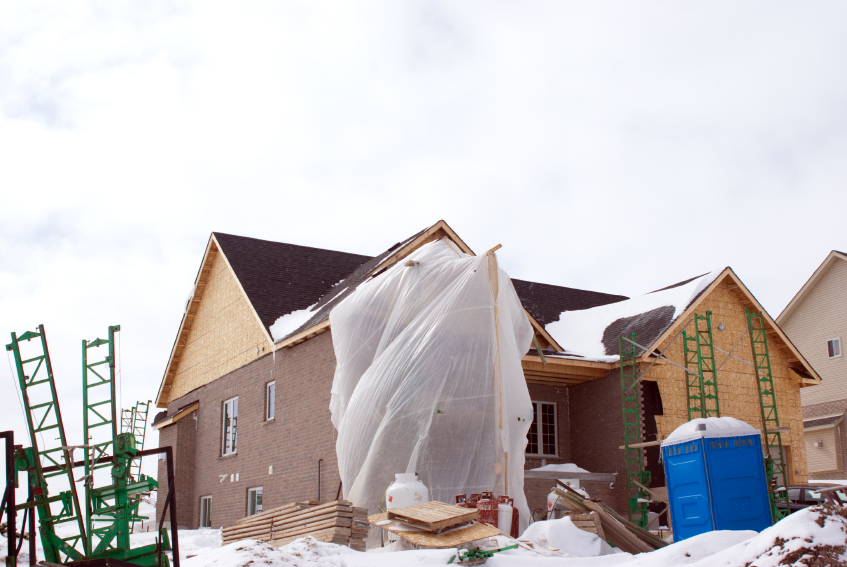Cold Weather Masonry Construction Overview

In these coldest months of the year, we would like to take the opportunity to remind you of the key considerations for masonry work in cold and windy weather conditions.
Careful consideration of the environment and what effect it may have on the masonry materials is essential. Improper cold weather masonry techniques may lead to issues of mortar deterioration or “floating” bricks. Many of these problems are the result of ice and snow on the bedding surface or water freezing within the mortar prior to curing. They are completely preventable.
Masonry Units
Protect units from ice, snow, and rain. Do not use salt to thaw iced formed on the surfaces of the units. Ensure units are completely thawed and relatively dry prior to placement within the wall. The temperature of masonry units should not be below -7° C (20° F) at the time of placing within the wall and worker productivity is typically increased when units are above 4° C (40° F) in temperature. Avoid raising temperature of units too high to avoid flash set of the mortar. Do not use torch or other direct heat sources to thaw the units or to melt ice or snow on the units.
Mortar
Remember that the choices of mortar type and the individual mortar materials are very important.
The use of a 1:1:6 portland cement-lime mortar, when properly combined with the appropriate quantity of water, will produce a general-purpose mortar exhibiting good workability and board life in its plastic state and good durability and flexibility in its hardened state.
Heat water and/or sand to produce mortar temperatures between 4° C and 49° C (40° F and 120° F) when environmental temperatures warrant. Avoid producing mortar temperatures higher than these to avoid flash set of the mortar. Every effort should be made to produce similar mortar temperatures on consecutive batches of mortar. Initial moisture content of the plastic mortar should be carefully controlled to ensure that proper setting can occur while avoiding freezing of excess water in the mortar.
Admixtures
Generally, the use of mortar admixtures such as set accelerators is not recommended. If an admixture is being considered, the effect of the particular admixture on all mortar properties should be carefully investigated prior to use. Admixtures containing chlorides should be avoided. In any case, the use of set accelerating admixtures does not preclude the need to follow cold weather masonry procedures.
Storage
– Store masonry units and bagged materials so that they are elevated above grade to avoid moisture migration from the ground.
– Sand piles should be covered to prevent the entrance of water from rain, melted snow, or ice.
– Consideration should be given to the method of heating the sand prior to deciding where it is to be stored.
– A shelter may be justified to protect the masonry materials from the elements depending on the size of the project.
Workmanship
Ensure that masonry is only placed on sound unfrozen materials, free of snow or ice.
On cold days, masons should ensure that they are properly dressed and protected from the elements. Workers that are comfortable when working will be more efficient. A heated enclosure is the best way to avoid many of the problems associated with cold weather masonry and is the best solution to maximize worker efficiency.
